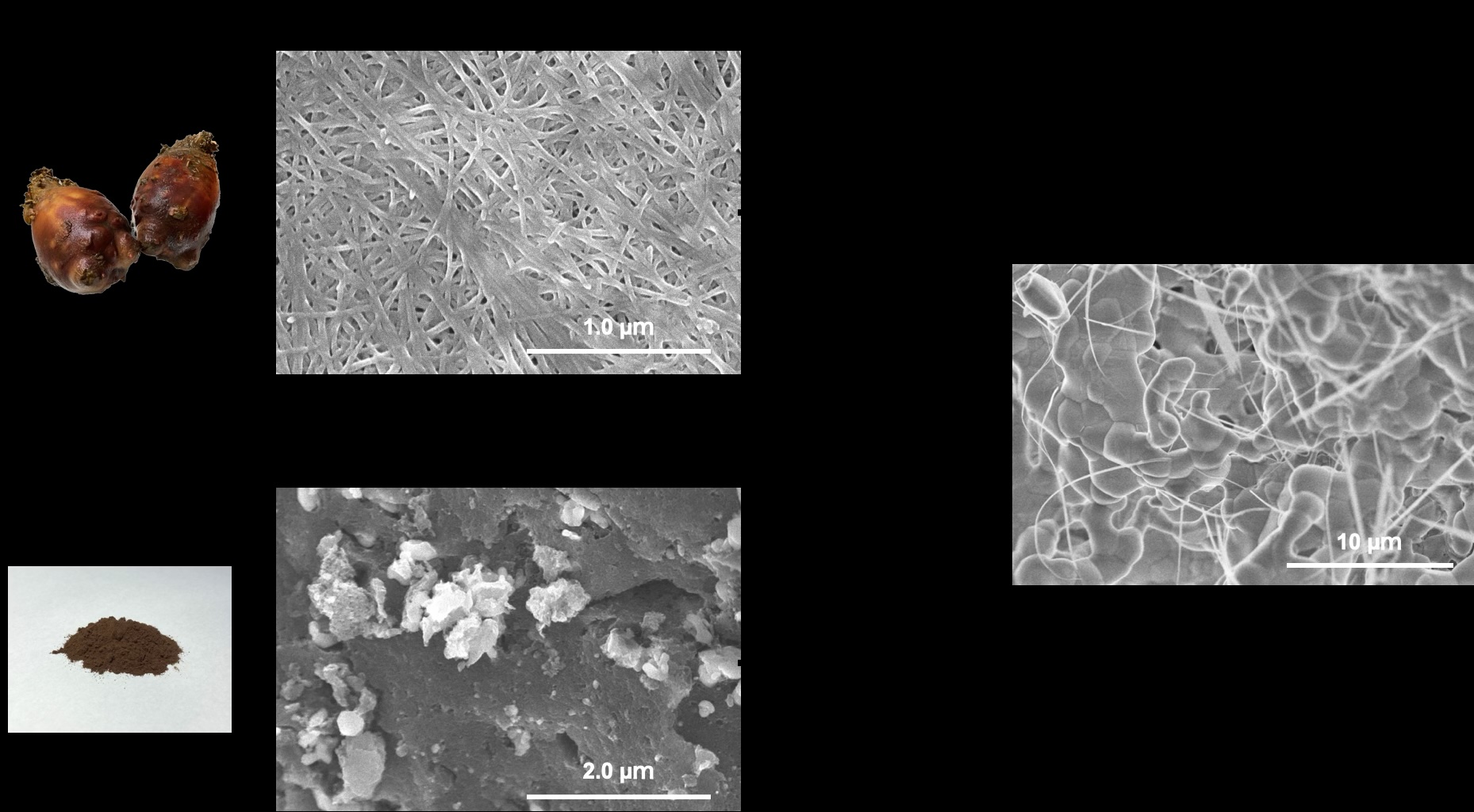 Extraction of cellulose nanofibers (CNFs) from sea pineapples' shells and application for energy materials
Extraction of cellulose nanofibers (CNFs) from sea pineapples' shells and application for energy materials
- Overview of Technology
The sea pineapple is the only animal that produces cellulose, and its shells, excluding the edible parts, are treated as industrial waste. By removing proteins and other components from the sea squirt shells and fibrillating them, cellulose nanofibers (CNFs) can be extracted. We have focused on the fact that CNFs derived from sea squirt shells have a higher degree of crystallinity and greater mechanical strength compared to those from wood, and we are exploring various applications of this material. Furthermore, since the material transforms into high-quality carbon upon calcination, we successfully developed "nano-blood carbon catalysts" by mixing it with dried blood powder and calcining the mixture. These catalysts are being applied in fuel cells, water electrolysis, and metal-air batteries.
- Comparison with Conventional Technology
CNFs derived from sea pineapple's shells have a higher degree of crystallinity compared to those from wood and provide longer fibers, resulting in high strength. When calcined, they transform into high-performance carbon.
- Features and Uniqueness
-
We are the only research laboratory that has consistently developed a process for the simple and large-scale purification of CNFs derived from sea pineapple's shells, along with the creation of film materials that leverage their unique properties (mechanical, engineering, surface science, electrical, and thermal characteristics), as well as the development of carbonized materials.
- Practical Application
-
We offer materials derived from sea pineapples' shell CNFs, as well as their carbonized products and catalysts. Please feel free to consult us regarding material supply, carbonization processes, or the utilization of catalysts.
- Keywords
Researchers
Advanced Institute for Materials Research
Hiroshi Yabu, Professor
Doctor of Science
I'm committed to challenging the creation of new materials without being constrained by conventional fields or common practices.


 Medical
Medical
 Life Sciences
Life Sciences
 Information Communication
Information Communication
 Environment
Environment
 Energy
Energy
 Manufacturing Technology
Manufacturing Technology
 Social Infrastructure
Social Infrastructure
 Frontier
Frontier
 Human and social sciences
Human and social sciences


